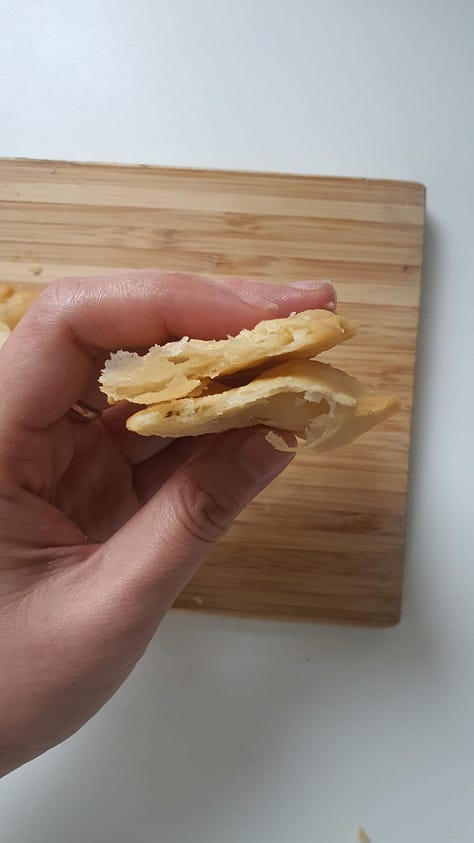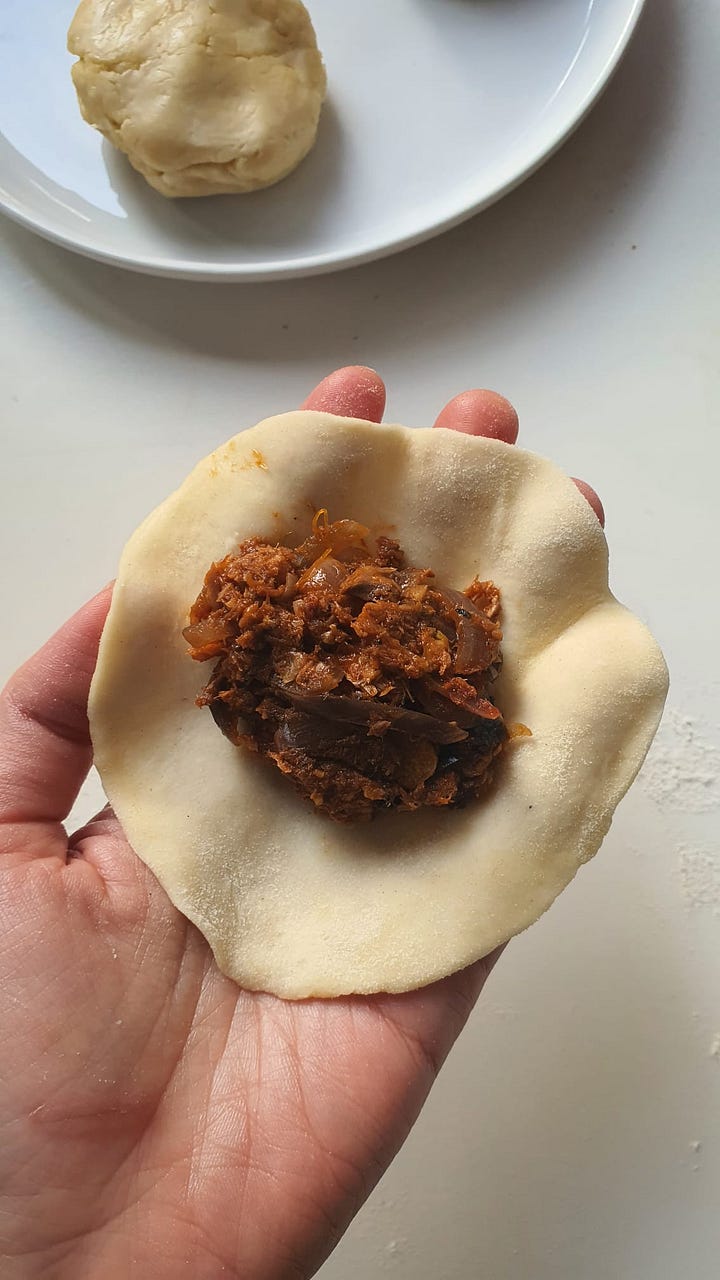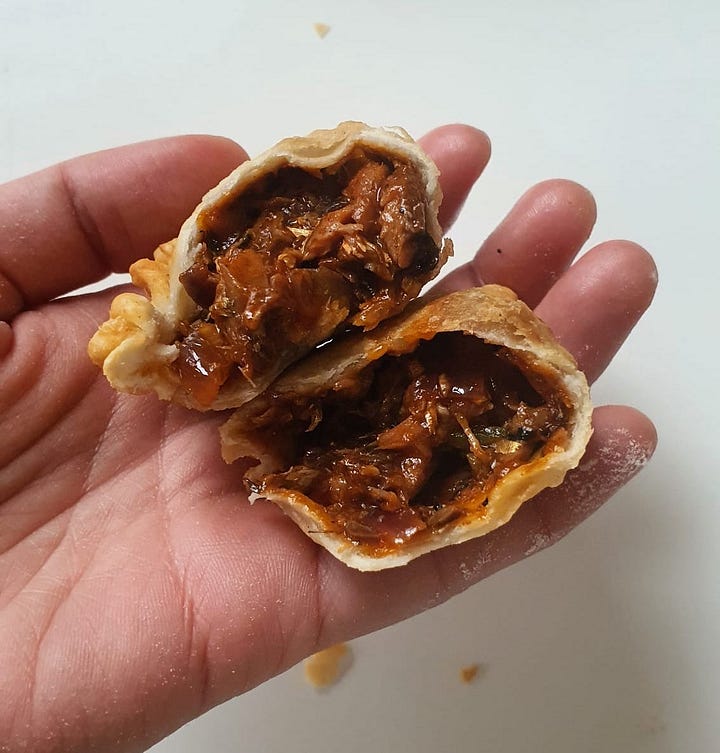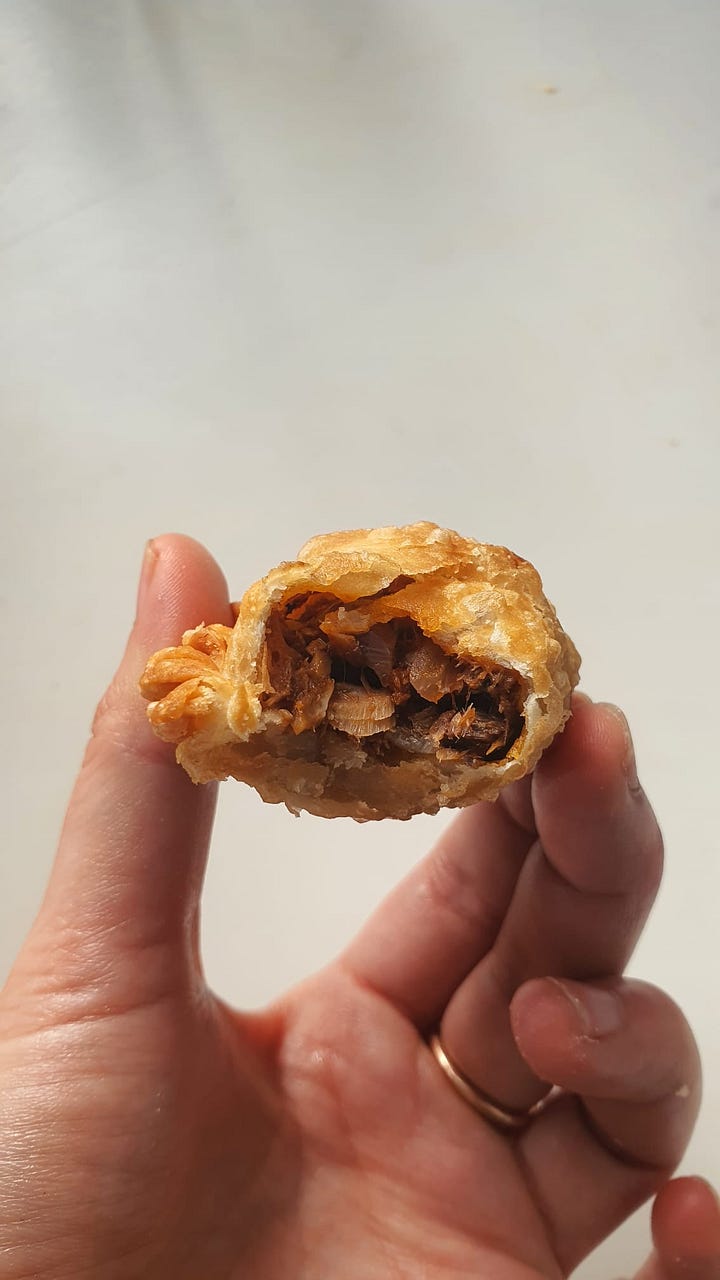Epok epok sardine
One aspect of Singaporean living that I miss is how easy it is to graze throughout the day. Properly cooked, bite-sized food is so readily accessible, and as far as snacky things go, curry puffs reign supreme. These are portable savoury pies, often with curried chicken and potatoes and hard-boiled egg. The most famous version is probably the one at Old Chang Kee’s, where the crust is doughy and substantial. But the puffs could also be made with a flaky pastry that blooms into a spiral when deep-fried. Or stained orange and laminated, Indian Muslim-style. Of course, there’s also baked curry puffs made with buttery pastry that sit in warmers at old-school cafes. An underrated item in the savoury pie category is epok epok. Like the standard curry puff, it is folded into a half moon and crimped along the edge, but what sets it apart is its thinner crust and size - more of a two to three bite snack than a meal in itself.
Fat content
My favourite epok epok filling is sardine. It’s dead simple to make - canned sardine in tomato sauce are emptied into a pan, and fried with lots of sliced onions and aromatics until it dries up. The sardine filling of epok epok sardine is the easy part to nail. It’s getting the crust right that is tricky.
The composition of the crust is straightforward, consisting of three core ingredients - water, fat, and flour. Traditionalists use rendered mutton fat for its depth of flavour, but most recipes these days use oil, or a combination of oil and margarine. There are others that use butter as the core fat, but passionate locals might argue that butter is more suited for the British-inspired curry puff. Epok epok, on the other hand, is said to have evolved from the empanada in the 1500s when Portuguese colonizers arrived in the region. Lard is the traditional fat of the empanada, so it makes sense that the local Muslims in Southeast Asia adapted by using mutton fat or oil instead.
When it comes to fat content, I’ve seen a range of 10-35%, and in some recipes, the oil is heated. So, I made three doughs:
My initial assumption was that more fat = flakier, crispier crust. I was surprised to find that this was not the case at all! The dough made with the least amount of fat was crisp and brittle like a cracker, while the high-fat doughs had a crisp but sandy texture that reminded me of Chinese pastries like tausarpiah. The dough made with hot oil was my least favourite - there were tender, rather than crisp layers within the fried dough, like roti prata:



Pleased with the results of the pastry with low fat and cold oil, I proceeded to make epok epok, but then I realised that the pastry performs differently when filled, folded, and deep-fried. The crust lost the openness of structure that it had before, and was slightly doughy in texture, akin to a thinner version of Old Chang Kee curry puff.


Starch gelanisation
There are many variations of empanada, and some, like Argentinian and Ilocos empanada, use boiling water in the dough. In the West, this technique is rather common, especially in pie-making. These hot water crusts are designed to hold heavy or wet fillings, compared to traditional pie crust, as they are especially sturdy. In Asia, scalding wheat flour with boiling water is also a common technique. In Mandarin, this is known as tang mian (scalded dough), and it lends dumpling wrappers a toothsome and slightly glutinous quality. It is also beneficial in spring onion pancake, because the boiling water instantly denatures the proteins in the flour, thus hindering gluten formation. This allows the dough to be easily rolled out - a trait that could come in handy if I was aiming for a super thin, brittle crust.
As expected, epok epok made with boiling water was super sturdy, but still crisp. Its substantial shell reminded me of a jin dui, those sesame seed-coated fritters that you’d get at dim sum restaurants. It wasn’t bad at all, however, just like hot-oil epok epok, hot-water epok epok had inner layers that were tender, rather than crispy.


Type of flour
After having explored the role of starch in harjeonggai batter in a previous newsletter, it was obvious that a possibility would be to replace some of the wheat flour with a gluten-free starch. I chose rice flour because this was what most epok epok recipes that use a combination of flours call for. I was very pleased with the results. It felt super crisp to the touch, like a cracker, and the crunch was more delicate and brittle, only slightly thicker than the crispy coating on a battered chicken wing.


Of the three, the rice flour epok epok is my favourite! Here’s a side-by-side comparison of the three types that I made:
You can find canned sardines in tomato sauce in every country, and the best part of making epok epok sardine? Any leftover filling is DELICIOUS between slices of bread, or atop rice. And if you have it, I recommend a generous squeeze of calamansi.
Epok epok sardine
Makes 13 to 15





